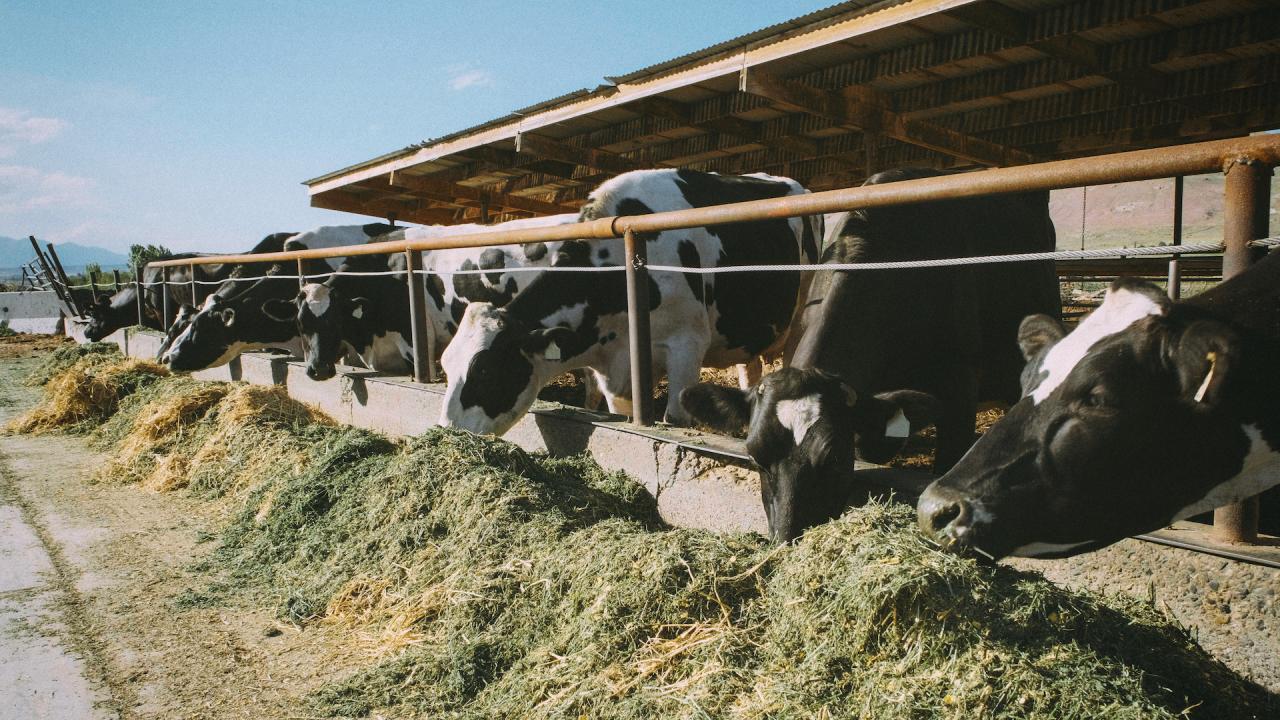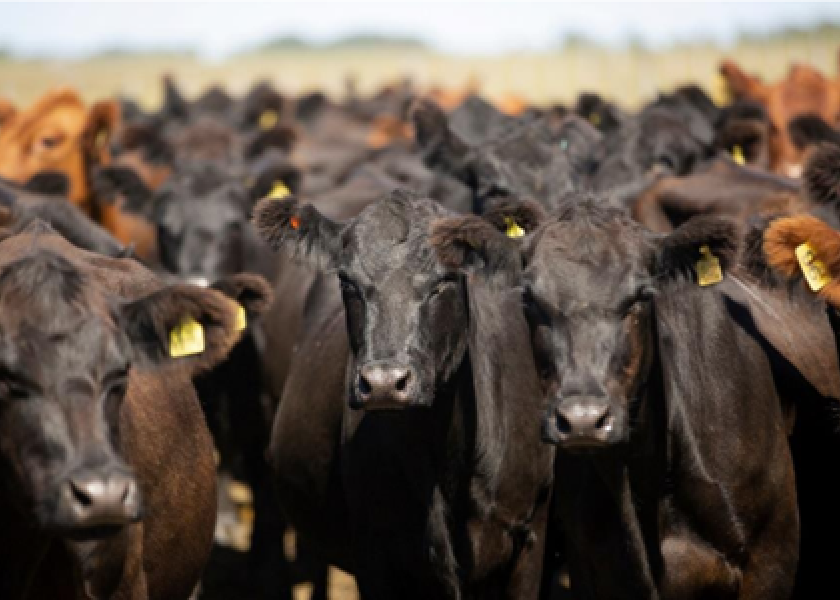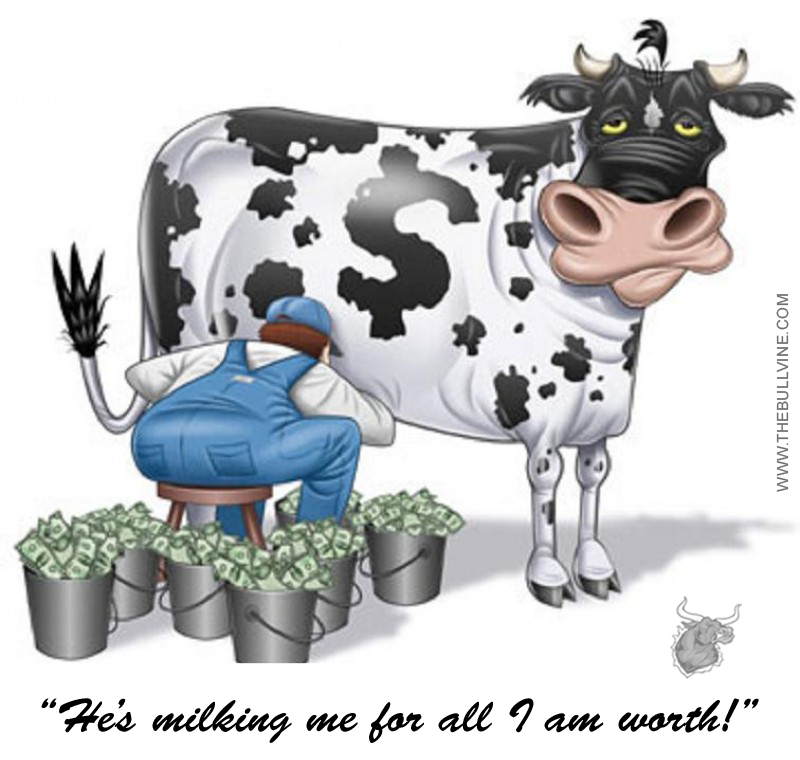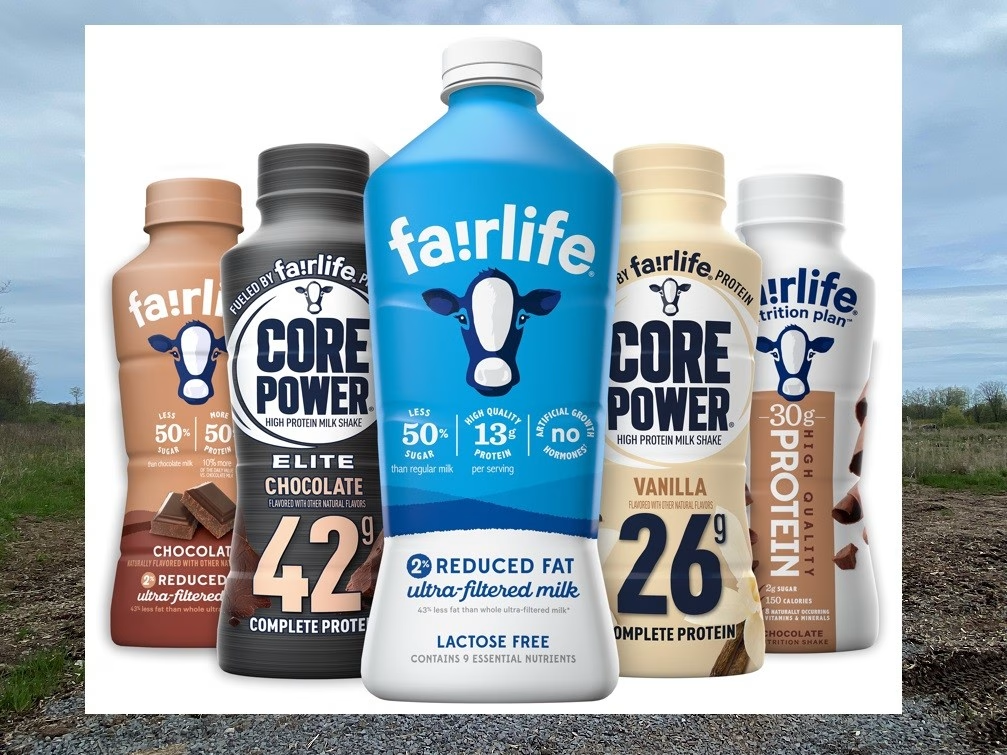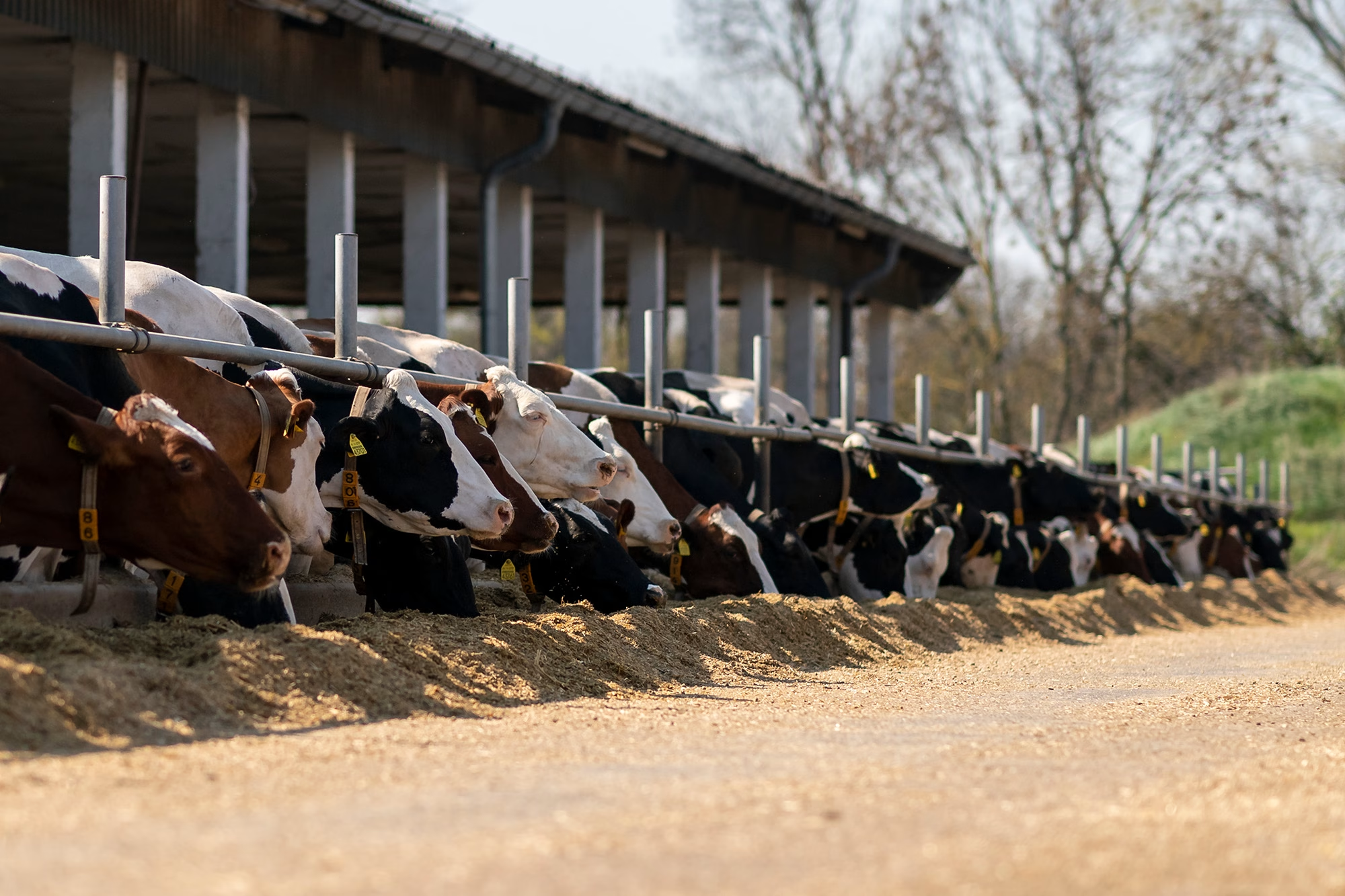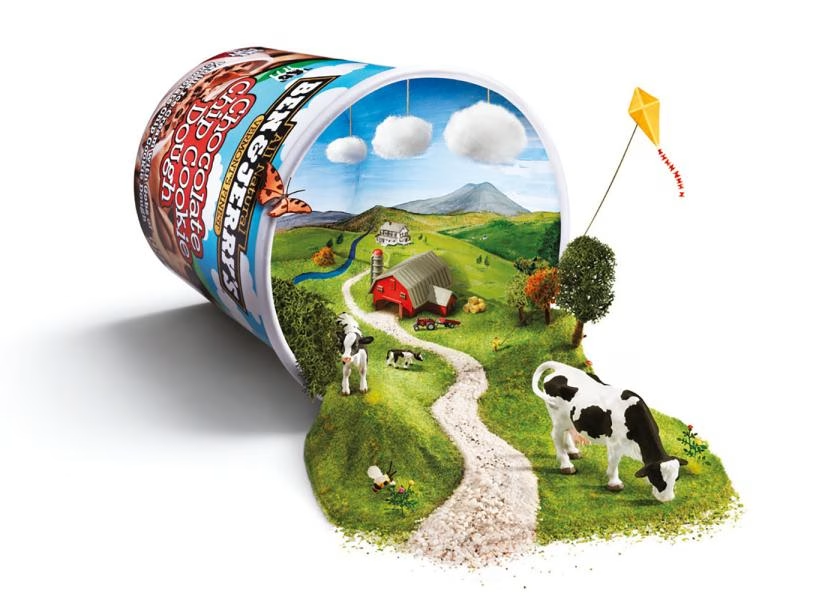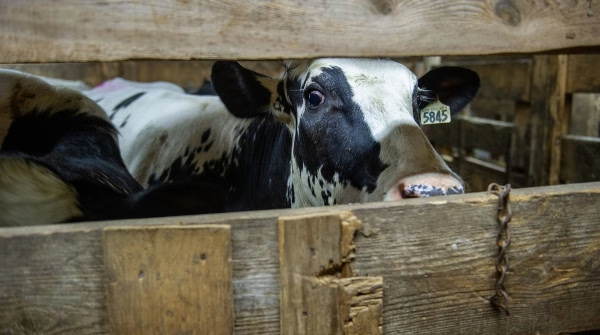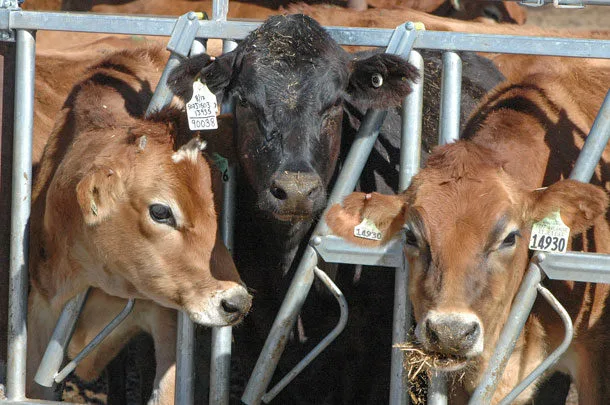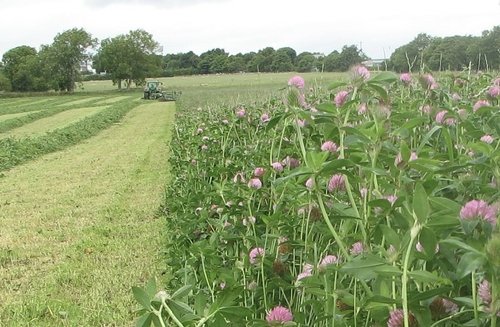Unlock the secret to healthier cows, higher profits, and a greener farm with rumen-protected amino acids (RPAAs). This game-changing nutrition strategy is revolutionizing dairy farming, boosting milk components, and slashing environmental impacts. Discover how these tiny nutrients could add six figures to your bottom line. Are you ready to join the RPAA revolution?
Picture this: You’re standing in your milking parlor, watching as your herd files in for the afternoon milking. The cows look healthy, sure, but what if I told you that hidden within their feed, a secret ingredient could boost your milk check by six figures?
No, it’s not some futuristic hormone or a genetically modified super grain. It’s a nutrient so small you can’t even see it, yet so powerful it’s changing the face of dairy farming across the globe.
Welcome to the world of rumen-protected amino acids (RPAAs) – the unsung heroes of modern dairy nutrition. These microscopic marvels are turning feed into fortune, slashing environmental impacts, and keeping cows healthier. And if you’re not using them yet, you might be leaving money on the table with every gallon of milk that leaves your farm.
“It’s like discovering oil in your backyard,” says Vermont dairyman Mark Richardson, whose profits soared after adopting RPAA technology. “Except instead of drilling, we’re just tweaking what goes in the feed mixer.”
From boosting butterfat to cutting carbon footprints, RPAAs are the Swiss Army knife of dairy supplements. But how do they work? What’s the catch? And most importantly—how can you harness their power on your farm?
Buckle up because we’ll dive into the science, strategy, and success stories behind dairy’s best-kept secret. Whether milking 50 cows or 5,000, this is one nutritional revolution you can’t afford to miss.
The Science Behind Rumen-Protected Amino Acids: Not Your Grandpa’s Protein Supplement
Why Cows Need a Protein Boost (And Why You Should Care)
Alright, picture this: You’ve got a herd of dairy cows, each a milk-making machine. Pretty impressive, right? But here’s the kicker—even these bovine superstars have their limits. It’s like having a sports car with a lawnmower engine. Sure, it looks great, but it’s not reaching its full potential.
You might be thinking, “Hold up, don’t cows already get protein from all that grass and feed?” Well, yes and no. Here’s the deal:
The Rumen Rumble
Your cow’s rumen is like a 24/7 fermentation party. Microbes break down feed, creating what we call microbial protein. This is a good start, but it’s like trying to fuel a rocket with regular gasoline for high-producing cows. They need premium stuff, and that’s where amino acids come in.
“But wait,” you might ask, “Aren’t all proteins created equal?”
Not quite, my friend. Let me introduce you to the VIPs of the amino acid world: methionine and lysine. These two are like the secret sauce in your grandma’s famous recipe—without them, everything falls flat.
The Dynamic Duo: Methionine and Lysine
Think of methionine and lysine as the power couple of dairy nutrition. They’re not just important; they’re downright essential. Here’s why:
- Milk Protein Synthesis: Want more protein in your milk? These amino acids are your ticket.
- Immune Function: Healthy cows mean less playing vet and more time cashing milk checks.
- Metabolic Health: Keep your cows running like well-oiled machines.
Dr. Jeffery Hall from Utah State University perfectly describes it: “It’s like running a factory at 70% capacity. RPAAs bypass the rumen’s inefficiencies, delivering precise nutrients where they’re needed most.”
Now, I know what you’re thinking. “If these amino acids are so great, why haven’t I heard about them?” Well, buckle up because we’re about to dive into the world of rumen-protected amino acids (RPAAs), and trust me, it’s a game-changer.
But before we get there, let’s address the elephant in the room—or should I say, the cow in the barn. How do we get these super-nutrients into our cows without the rumen microbes gobbling them up first? That, my friends, is where the magic of RPAAs comes in. And let me tell you, it’s some pretty cool science.
Stay tuned because, in the next section, we will break down how these tiny powerhouses work their magic. And who knows? By this end, you might be looking at your feed mixer in a new light. PMC (2023). Supplementation of Rumen-Protected Lysine and Methionine in Grazing Dairy Cows. National Center for Biotechnology Information. Hall, J.O. et al. (2021). Investigation of Methionine and Lysine Derivatives as Rumen-Protected Amino Acids. Utah State University.
The RPAA Magic Trick: How These Tiny Powerhouses Dodge the Rumen
Alright, folks, gather ’round. We’re about to dive into the most incredible magic trick in dairy nutrition. Remember those VIP amino acids we talked about? Well, they’ve got a secret weapon: a high-tech disguise that lets them sneak past the Romans undetected. Pretty slick, huh?
The Rumen: Where Good Nutrients Go to Die (Usually)
First things first—let’s talk about the rumen. It’s like a 24/7 all-you-can-eat buffet for microbes. It is excellent for breaking down rigid plant material but not for delicate amino acids. Usually, our star players (methionine and lysine) would get gobbled up before they could shine.
But what if we could give them a bulletproof vest? Enter: rumen-protected amino acids (RPAAs).
The Stealth Mission: pH-Sensitive Coatings
Here’s where it gets cool. Scientists have developed special coatings (like ethyl cellulose) that act like an invisibility cloak for our amino acids. These coatings are pH-sensitive, which means they’re tough as nails in the acidic rumen but dissolve like sugar in water once they hit the small intestine.
Think of it like those spy movies where the secret message only appears in the right light. Our amino acids cruise through the rumen undetected, then—BAM!—they reveal themselves right where we need them.
The Big Reveal: Targeted Delivery
So what happens when these undercover agents complete their mission? Magic, that’s what:
- Milk Component Boost:
- Milk protein jumps by 0.1–0.3%
- Fat content increases by 0.2–0.4%
- (That might not sound like much, but trust me, your milk check will notice.)
- Nitrogen Ninja Skills:
- Urea excretion drops by 20–25%
- Ammonia emissions take a nosedive
- (Your cows and your neighbors’ noses will thank you.)
But Wait, There’s More!
Now, I know what you’re thinking. “This sounds too good to be true. What’s the catch?” Well, here’s the kicker—there isn’t one. These benefits are backed by solid research. We’re not talking about some snake oil supplement; this is cutting-edge nutritional science.
Of course, like any good tool, RPAAs need to be used correctly. You can’t just dump them in the feed and expect miracles. But when used as part of a well-balanced ration? That’s when the magic happens.
The Million-Dollar Question
So, are you ready to give your cows the VIP treatment they deserve? With RPAAs, you’re not just feeding cows—you’re fueling efficiency, boosting production, and giving the environment a break.
In our next section, we’ll explain exactly how these benefits translate to cold, hard cash. Because that’s what we’re all here for, right? Well, that and happy, healthy cows. But more on that later. Stay tuned, folks—the best is yet to come!
Show Me the Money: The Economic Impact of RPAAs
Alright, folks. It’s time to talk turkey. Or talk milk money? We’ve covered the science; now, let’s dive into what matters—the bottom line. Grab your calculators because these numbers will make your accountant dance happily.
Profitability Per Cow: The Gift That Keeps on Giving
Let’s start with the headline: A 2024 meta-analysis (that’s fancy talk for “we looked at a bunch of studies”) found that for every dollar you invest in rumen-protected methionine (RPM), you get $2.50 to $3.00 back. Not too shabby, right?
But wait, there’s more! Let’s break it down cow by cow:
| What We’re Measuring | How Much It Improves | Extra Cash in Your Pocket |
| Milk protein (+0.2%) | 12 lbs | $45 |
| Milk fat (+0.3%) | 18 lbs | $72 |
| Feed efficiency | 5-7% | $85 |
Now, I know what you’re thinking. “Those numbers look small.” But here’s the kicker—this is per cow per year. And it assumes you’re only producing 22,000 lbs of milk annually at $18/cwt. Are your cows cranking, or are milk prices higher? Cha-ching!
The Herd Effect: When Small Changes Add Up
Let’s put this in perspective. Say you’ve got a 500-cow herd. Pretty average, right? Hold onto your hat because of those little improvements we just discussed. They add up to $150,000 to $200,000 in extra profit annually.
“But wait,” I hear you say, “what about the cost of these fancy amino acids?” Fair question! Even after you factor in RPAA costs (which run about $6-12 per cow per month), you’re still looking at six figures of pure profit. Not too shabby for sprinkling some extra amino acids in the feed, huh?
The Hidden Jackpot: Savings You Didn’t Even Know You Needed
Now, here’s where it gets exciting. Those profit numbers? They’re just the tip of the iceberg. Check out these hidden savings:
- Manure Management: RPAAs cut nitrogen runoff by 25%. That means you’re saving $15-20 per acre on fertilizer. Got 1,000 acres? That’s up to $20,000 back in your pocket.
- Herd Health: Here’s a fun fact – RPM-fed herds see 30% fewer cases of mastitis and 15% fewer uterine infections. Think about all those vet bills and dumped milk you’re avoiding. It adds up fast!
Economic Impact: Crunching the Numbers
Before we dive into the specifics of RPAA benefits, let’s look at average milk production across different dairy breeds:
| Breed | Milk (Kg) | Fat % | Protein % |
| Holstein | 11,253 | 4.08 | 3.32 |
| Ayrshire | 8,265 | 4.16 | 3.42 |
| Jersey | 7,330 | 5.16 | 3.90 |
| Brown Swiss | 8,764 | 4.24 | 3.57 |
| Milking Shorthorn | 7,137 | 3.97 | 3.32 |
| Guernsey | 7,197 | 4.69 | 3.51 |
| Canadienne | 5,992 | 4.26 | 3.59 |
Now, let’s consider how RPAAs can boost these numbers…
This table provides a baseline for readers to understand typical production levels and how RPAA supplementation could potentially improve them.
The Two Million Dollar Question
So, would you be interested if I told you there was a way to boost your profits by six figures, cut your environmental impact, and keep your cows healthier, all with a straightforward change to your feed program?
Of course, you would! And that’s precisely what RPAAs offer. It’s not magic; it’s not a gimmick—it’s solid nutritional science translating directly into cold, hard cash.
Now, I know what some of you old-timers might be thinking. “If it sounds too good to be true, it probably is.” And usually, I’d agree with you. But here’s the thing—we’ve got the data to back this up: real farms, real cows, accurate results.
So, what do you say? Are you ready to upgrade your feed program (and your bank account)? Because let me tell you, in today’s dairy market, every edge counts. And RPAAs? They’re not just an edge—they’re the whole darn sword.
Stay tuned. Next, we’ll discuss how to implement this on your farm. Trust me, you won’t want to miss it!
Farmer-Centric Strategies for Success: Your Roadmap to RPAA Riches
Alright, folks, we’ve talked the talk. Now it’s time to walk the walk. Let’s dive into how to implement RPAAs on your farm without breaking a sweat (or the bank).
Step 1: Balance Diets Like a Pro Chef
First things first—forget one-size-fits-all. Your cows are unique, and so is your region. Let’s break it down:
The Corn Belt Special
If you’re swimming in corn silage, listen up. Your cows probably live large on energy but cry out for lysine. It’s like having a car with a full tank but no steering wheel. The fix? Add about 20 g of rumen-protected lysine (RPL) to your high-corn diets—boom—balanced nutrition.
The Northeast Grass-Fed Groove
Running a grass-based operation in the Northeast? Your cows might be methionine-deficient. It’s like having a smartphone with no charger. Frustrating, right? Toss 25-30 g of rumen-protected methionine (RPM) to offset that low-methionine alfalfa. Problem solved.
But wait, how do you know exactly what to add? Enter the Cornell Net Carbohydrate and Protein System (CNCPS). It’s like GPS for cow nutrition. This nifty tool models amino acid flows and helps you optimize supplementation. Trust me, it’s worth learning about.
Step 2: Monitor & Adjust (Because Even Cows Need Feedback)
You wouldn’t drive a car without looking at the speedometer. The same goes for RPAAs. Here’s what to watch:
Milk Urea Nitrogen (MUN)
Target 8-12 mg/dL. If you’re below 10, your cows are waving red flags for amino acid deficits. They say, “Hey, we need more good stuff!”
Component Tracking
A fun fact: a measly 0.1% protein boost adds $0.15 per hundredweight. That’s enough to cover your RPAA costs if you hit 75 lbs/day production. Ka-ching!
Don’t believe me? Just ask Mark Richardson, a Vermont dairy farmer who took the plunge:
“We started small—just supplementing fresh cows,” he says. “Within six months, our herd average hit 4.1% fat and 3.3% protein. Now, 90% of our cows get RPAAs through TMR.”
Now, that’s what I call results!
Step 3: Mitigate Risks (Because Too Much of a Good Thing… Isn’t)
I know, I know. After hearing all these benefits, you’re probably itching to dump a truckload of RPAAs into your feed mixer. But hold your horses! Like anything in life, moderation is key.
The Goldilocks Zone
Work with your nutritionist to achieve the perfect methionine: lysine ratio. We aim for 3:1—not too high or low, but just right.
Baby Steps
Rome wasn’t built in a day, nor is the perfect RPAA program. Start with about 20 g/day during peak lactation. Then, adjust based on what your milk components tell you. It’s like fine-tuning an engine—a little tweak here, a slight adjustment there.
The Million Dollar Question (Okay, Maybe Just a Thousand Dollar Question)
So, are you ready to take your herd’s nutrition to the next level? Remember, RPAAs aren’t just another feed additive—they’re a precision tool for unlocking your cows’ full potential.
And hey, if you’re feeling overwhelmed, don’t sweat it. That’s what nutritionists are for. They’re like the pit crew for your dairy operation—there to help you squeeze every last performance drop out of your herd.
Next, we’ll tackle some common questions and bust a few myths about RPAs. Because let’s face it—knowledge isn’t just power in the dairy world. It’s profit.
Stay tuned, folks. The RPAA revolution is just getting started!
Green Pastures, Green Profits: The Environmental & Regulatory Wins of RPAAs
Alright, folks, let’s talk about the elephant in the room—or should I say, the cow in the pasture? Dairy farming has been getting a bit of a bad rap regarding environmental impact. But what if I told you that those little amino acids we’ve been chatting about could help turn your farm into an eco-warrior’s dream? Buckle up because we’re about to dive into the green side of RPAAs!
Slashing Carbon Hoofprints: It’s Not Just Hot Air
You’ve probably heard all the buzz about carbon footprints. Get ready for this bombshell: RPAA adoption could cut the dairy sector’s greenhouse gas emissions by a whopping 5-7%. That’s not just a drop in the milk bucket—it’s a game-changer!
But what does that mean for you, the farmer on the ground? Let’s break it down:
Carbon Credits: Ka-ching!
If you’re participating in carbon credit programs (and if you’re not, why the heck not?), you could be looking at some serious green—and I’m not just talking about your pastures. We’re talking:
- $15-$30 per ton of CO₂ equivalent in voluntary markets
That’s right. You could be paid for being environmentally friendly. It’s like Mother Nature is sending you a thank-you check!
Fertilizer Offsets: The Gift That Keeps on Giving
Here’s a fun little equation for you:
1 lb reduced nitrogen = 0.005 metric tons CO₂e
Now, I know what you’re thinking. “That doesn’t sound like much.” But let’s put it in perspective. If you’re reducing nitrogen output by 1000 lbs (which isn’t unreasonable with RPAAs), that’s five metric tons of CO2 equivalent. At $20/ton, you’re looking at an extra $100 in your pocket for using less fertilizer!
The Regulatory Tango: Staying Ahead of the Curve
Now, let’s face it—environmental regulations aren’t getting any looser. But here’s the kicker: by adopting RPAAs now, you’re not just complying with current rules—you’re future-proofing your farm.
Think about it. While other farmers are scrambling to meet new nitrogen limits or carbon reduction goals, you’ll sit pretty, sipping your coffee (or maybe a nice cold glass of milk), knowing you’re already ahead of the game.
The Million Dollar Question (Or Should We Say, The Million Tree Question?)
So, here’s the deal. RPAAs aren’t just about boosting your milk check (although that’s a pretty sweet perk). They’re about positioning your farm as a leader in sustainable dairy production. And in today’s market? That’s worth its weight in gold… or should I say, green?
But I can hear some of you skeptics out there. “Sure, it sounds good on paper, but does it make a difference?” Well, let me tell you a quick story. I was chatting with a farmer in Wisconsin last month—let’s call him Joe. Joe implemented RPAAs two years ago, mainly for production benefits. But last year, when his county started a carbon reduction initiative, guess who was first in line for the incentives? That’s right—our buddy Joe. He didn’t just meet the targets—he blew them out of the water.
Wrapping It Up
Here’s the deal, folks. RPAAs aren’t just a nutritional supplement—they’re your secret weapon in the battle for sustainable, profitable dairy farming. They’re helping you:
- Cut greenhouse gas emissions
- Tap into carbon credit markets
- Reduce fertilizer use (and costs)
- Stay ahead of environmental regulations
And the best part? You’re doing all this while boosting your production and your profits. It’s a win-win-win situation. Or a win-win-win-win?
So, what do you say? Are you ready to turn your farm into a lean, green, milk-producing machine? Because let me tell you, the future of dairy is green—and with RPAAs, you can be leading the charge.
Stay tuned. Next, we’ll tackle some of the most common questions and myths about RPAs. Trust me, you won’t want to miss it!
Navigating the Future: Policy Shifts, Innovations, and Smart Investments in RPAAs
Alright, dairy dynamos, let’s discuss the road ahead. We’ve covered the basics of RPAAs, but agriculture isn’t standing still. So, grab your crystal balls (or maybe just a fresh cup of coffee), and let’s dive into what’s next.
Policy Shifts: When Uncle Sam Gets Interested in Your Manure
Do you know how they say death and taxes are the only certainties in life? In the dairy world, we might need to add “manure regulations” to that list. Take California, for instance. They’re not just suggesting you watch your nitrogen output—they’re slapping a $1,300 per ton tax on excess manure nitrogen. Ouch!
But here’s where our RPAA friends come to the rescue. RPAA-fed herds cut nitrogen excretion by a whopping 25%. That’s not just good for the environment—it’s like having a “Get Out of Tax Jail Free” card.
“But wait,” I hear you say, “I don’t live in California!”
True, but remember: California often sets the trend for environmental regulations. It’s like the cool kid in school—where they go, others follow. So, implementing RPAAs now is not just smart farming—it’s future-proofing your operation.
The Road Ahead: Innovations That’ll Make Your Head Spin
Now, let’s talk about what’s cooking in the world of RPAA tech. Trust me, this stuff is more remarkable than a cow in an air-conditioned barn.
Next-Gen Delivery Systems
Remember those pH-sensitive coatings we talked about earlier? Well, they’re getting an upgrade. Boehringer Ingelheim (the big pharma guy) ran a trial in 2024 with a new microencapsulation technique. The results? 92% intestinal release compared to 78% for traditional coatings. That’s like upgrading from a flip phone to a smartphone!
But wait, there’s more!
Gene-Edited Alfalfa: The Future is Green (and High in Methionine)
Imagine alfalfa that’s naturally high in methionine. No, this isn’t science fiction—it’s hitting field trials in 2026. We’re talking about 18% crude protein varieties compared to the usual 14%. That’s like your alfalfa field suddenly becoming a methionine factory!
Show Me the Money: Financing Your RPAA Revolution
Now, I know what some of you are thinking. “This all sounds great, but who will pay for it?” Well, buckle up because there’s good news on that front, too.
NRCS EQIP Grants: Uncle Sam Wants You… to Use RPAAs
If you’re running a farm with under 500 cows, the Natural Resources Conservation Service (NRCS) might be your new best friend. Their Environmental Quality Incentives Program (EQIP) can cover up to 75% of your RPAA costs. That’s like getting a 75% off coupon for farm efficiency!
Carbon Markets: Getting Paid to Be Green
Remember those carbon credits we mentioned? In California, the Dairy Cares program is putting their money where their mouth is. They’re paying $0.05 per hundredweight for verified nitrogen reductions. It might not sound like much but for a 1,000-cow dairy producing 70 lbs per cow daily? That’s an extra $12,775 a year. It’s not too shabby for just tweaking your feed program!
The Three Million Dollar Question
So, here’s the deal. The future of dairy farming is changing faster than a cow can swish its tail. RPAAs aren’t just a trend – they’re becoming a necessity. The question isn’t “Can I afford to implement RPAAs?” It’s “Can I afford not to?”
Think about it. With stricter regulations, innovative tech in the pipeline, and financial incentives up for grabs, RPAAs are your ticket to staying ahead of the curve. They’re not just feeding your cows—they’re feeding your farm’s future.
So, what’s your next move? Are you ready to ride the RPAA wave into a more profitable, sustainable future, or will you wait for regulations?
Remember, in dairy farming, the early bird doesn’t just get the worm—it receives the premium milk check, the environmental kudos, and the peace of mind knowing they’re ready for whatever comes next.
Stay tuned, folks. The RPAA revolution is just starting, and trust me—you haven’t seen anything yet!
The Bottom Line
Let’s cut to the chase: Rumen-protected amino acids aren’t just another farm fad but a game-changer. We’ve seen how RPAAs boost milk components, improve cow health, and fatten your bottom line with returns of $2.50-$3.00 for every dollar invested. But it doesn’t stop there. These tiny nutritional powerhouses are also your secret weapon against tightening environmental regulations, slashing nitrogen waste, and potentially cutting your carbon footprint by 5-7%.
The evidence is clear: RPAAs offer a rare opportunity to increase profitability, enhance sustainability, and stay ahead of regulatory curves. From the science behind their rumen-bypassing magic to the innovative delivery systems on the horizon, RPAAs are reshaping the future of dairy nutrition. And with financing tools like NRCS EQIP grants and carbon market incentives, there’s never been a better time to jump on board.
So, here’s your call to action: Talk to your nutritionist this week about implementing RPAs. Start with a trial group, monitor those components, and watch the magic happen. Remember, in the fast-evolving dairy world, standing still is moving backward. RPAAs are your opportunity to leap ahead. The future of dairy is here—and it’s amino acid-shaped. Are you ready to ride this wave to success?
Key Takeaways
- Rumen-protected amino acids (RPAAs) are a cutting-edge nutritional strategy for dairy cows.
- RPAAs, particularly methionine and lysine, bypass rumen degradation for targeted delivery.
- Benefits include increased milk components, improved cow health, and reduced environmental impact.
- Milk protein can increase by 0.1-0.3% and fat by 0.2-0.4% with RPAA supplementation.
- Economic returns range from $2.50 to $3.00 for every $1 invested in RPAAs.
- Nitrogen waste can be reduced by 20-25%, potentially cutting greenhouse gas emissions by 5-7%.
- Implementation strategies vary by region and feed type (e.g., corn silage vs. grass-based diets).
- Monitoring tools include Milk Urea Nitrogen (MUN) levels and regular component testing.
- Future innovations include improved delivery systems and gene-edited high-methionine alfalfa.
- Financial incentives are available through programs like NRCS EQIP grants and carbon markets.
- RPAAs offer a way to increase profitability while meeting tightening environmental regulations.
Summary
Rumen-protected amino acids (RPAAs) are emerging as a game-changing nutritional strategy in dairy farming, offering a trifecta of benefits: improved cow health, increased profitability, and enhanced environmental sustainability. These specially coated nutrients bypass the rumen, delivering essential amino acids like methionine and lysine directly to the small intestine, where they can be efficiently absorbed and utilized. Research indicates that RPAA supplementation can boost milk protein by 0.1-0.3% and fat by 0.2-0.4%, translating to significant economic gains—up to $2.50-$3.00 return for every dollar invested. Beyond production benefits, RPAAs reduce nitrogen waste by 20-25%, potentially cutting the dairy sector’s greenhouse gas emissions by 5-7%. With innovative delivery systems on the horizon and financial incentives available through programs like NRCS EQIP grants, RPAAs represent a forward-thinking approach for dairy farmers looking to optimize their operations in an increasingly competitive and environmentally conscious market.
Learn more:
- Optimizing Dairy Cow Performance and Nitrogen Efficiency with Low Protein Red Clover and Grass Silage Diets: The Role of Starch and Rumen-Protected Methionine Supplements
- Optimizing Postpartum Cow Health: Essential Nutrition and Management Tips for Dairy Farmers
- 7 Essential Questions Every Dairy Farmer Must Ask Their Nutritionist
 Join the Revolution!
Join the Revolution!
Bullvine Daily is your essential e-zine for staying ahead in the dairy industry. With over 30,000 subscribers, we bring you the week’s top news, helping you manage tasks efficiently. Stay informed about milk production, tech adoption, and more, so you can concentrate on your dairy operations.







 Join the Revolution!
Join the Revolution!
